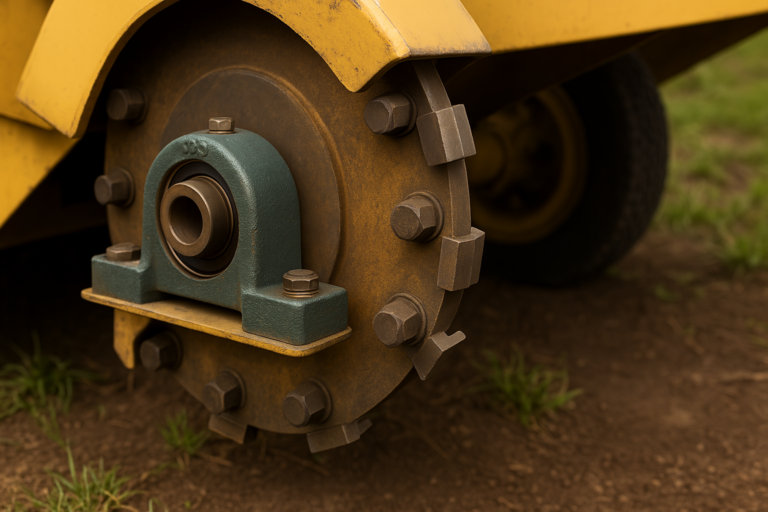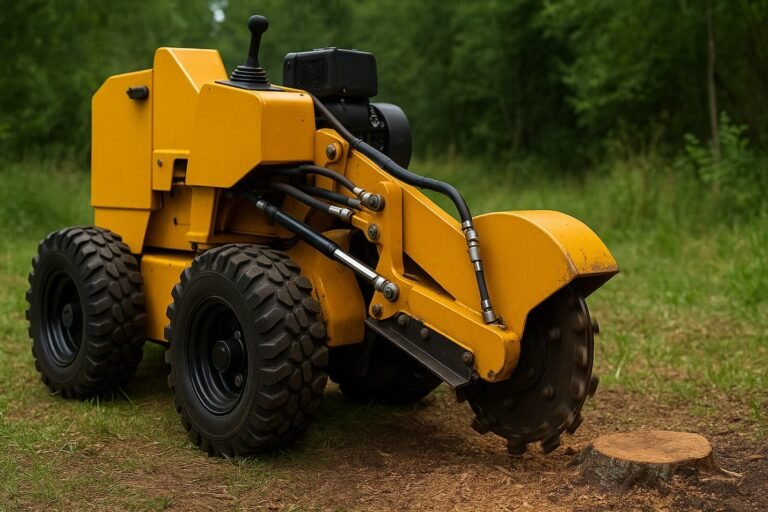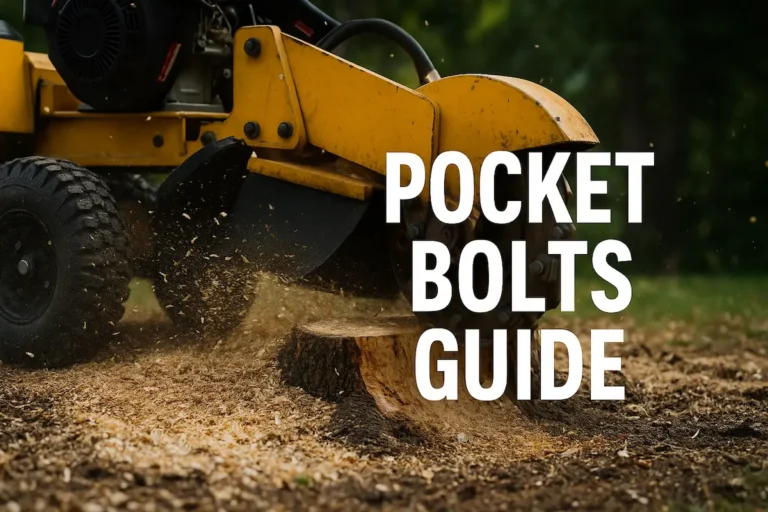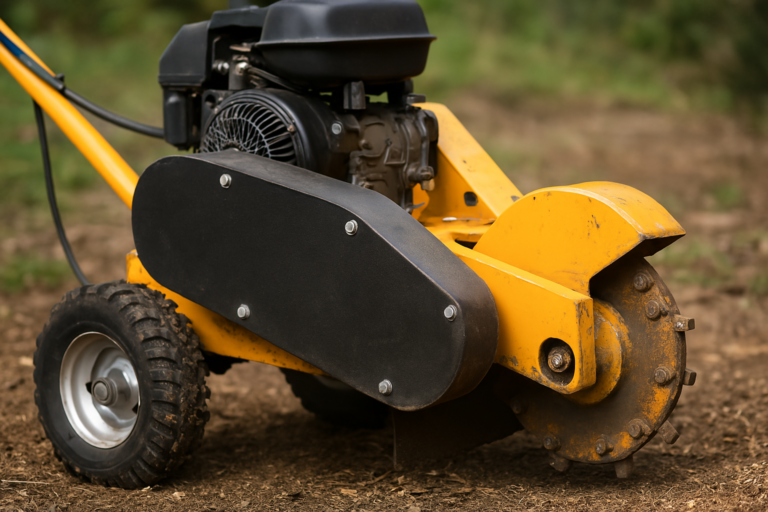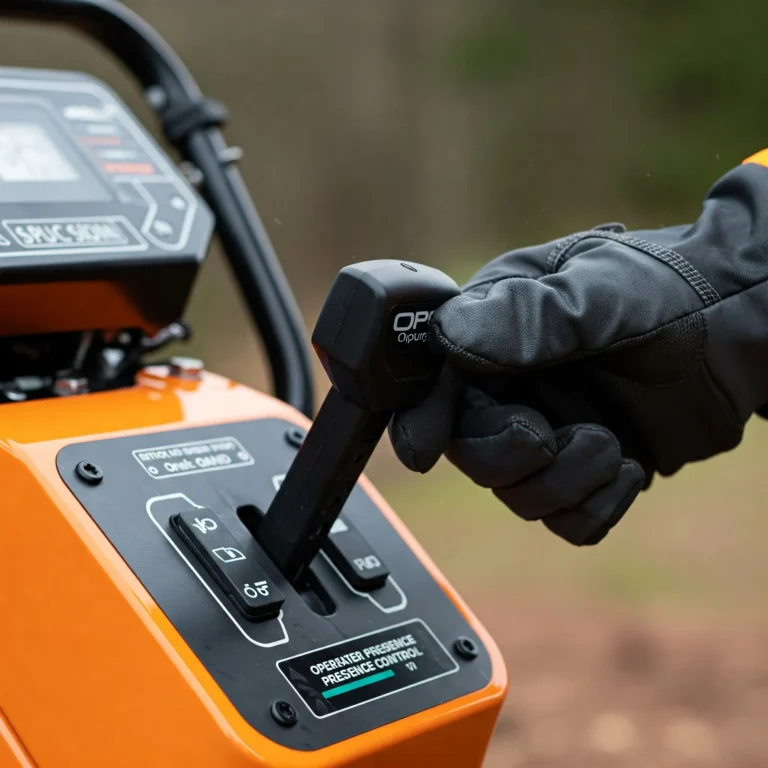Understanding ‘Pockets’ in Stump Grinding: Voids, Settling & Missed Spots Explained
Have you heard about “pockets” after stump grinding?
It is not a standard term that builders or gardeners often use.
It usually means dips in the ground or missed bits of wood.
This guide explains these “pockets” and how to deal with them.
We will help you understand why they happen and how to avoid them.
Visualizing “Pockets” in Stump Grinding
The term “pockets” after stump grinding isn’t standard, but usually refers to specific common issues. This chart illustrates the typical causes people mean when they talk about post-grinding “pockets”.
Key Takeaways from the Chart
- Ground Settling is Dominant: The vast majority of issues described as “pockets” are actually dips caused by the ground settling over time. This happens as the underground void, initially filled with loose wood chips, compacts and decomposes.
- Missed Spots are Secondary: A smaller, but still significant, portion of “pockets” refers to actual small pieces of the stump or roots left behind due to incomplete or uneven grinding.
- Internal Stump Issues are Rare: Problems like pockets of decay or debris *within* the stump itself are rarely what homeowners refer to as “pockets” after the job is done; these are more relevant during the grinding process itself.
- Prevention Focus: Understanding that settling is the main issue highlights the importance of proper chip removal and backfilling techniques to prevent future dips. Thorough grinding addresses the issue of missed spots.
What Do People Usually Mean by "Pockets" After Stump Grinding?
Let's clear up the confusion about "pockets".
Most often, people mean one of two things.
The first meaning is the most common problem.
The Main Culprit: Unseen Voids Leading to Ground Settling
When a tree stump is ground away, a space is left underground.
Think of it like digging a hole where the stump and big roots used to be.
This underground space is called a void.
This void is complete of loose wood chips, called grindings, right after grinding.
These wood chips are soft and have lots of air between them.
Over time, these chips break down (decompose) or get squashed down (compact).
Rainwater can make the chips settle faster.
The ground level above the void sinks as the chips shrink and settle.
This creates a dip or a sunken patch in your lawn or garden bed.
This dip is the "pocket" many notice weeks or months later.
One homeowner shared their experience on a garden forum.
"We had a big oak stump ground out in the spring. We raked the chips flat. By autumn, there was a clear dip, like a bowl, where the stump had been. It was about 6 inches deep in the middle! I wish the company had told us how to fill it properly." (Based on standard forum reports)
This settling is quite common, especially with larger stumps.
The bigger the stump, the bigger the underground void.
A bigger void means a higher chance of noticeable sinking later on.
Less Common: Missed Spots or Uneven Grinding
Sometimes, "pockets" means something different.
It can mean actual small bits of the stump or roots left behind.
Imagine small "pockets" of wood still in the ground.
This happens if the grinding machine operator misses some spots.
Or perhaps they did not grind deep enough across the whole area.
Maybe they were rushing the job.
Sometimes, rocks or very hard wood make it tricky to grind evenly.
An inexperienced operator might also leave missed spots.
You might find these woody pockets when planting grass or flowers.
Your shovel might hit solid wood just under the surface.
A professional gardener shared this story:
"I hired a cheap grinding service for a client. It looked okay at first glance. But when digging to put in new plants, I hit small lumps of hardwood just below the surface. They were like little hidden pockets the grinder missed. We had to get another company back to finish it properly." (Synthesised testimonial)
So, these "pockets" are bits of the stump the grinder did not entirely remove.
This is usually due to the quality of the grinding work itself.
Rare: Pockets of Decay or Debris Within the Stump
Very occasionally, "pockets" might refer to the stump itself.
Some stumps have soft, rotten patches inside them.
These are pockets of decay.
Sometimes, a tree grows around things like stones or old wire.
These become pockets of debris hidden inside the wood.
Grinding these areas can feel different for the machine operator.
Soft spots grind away very quickly.
Hitting rocks can be noisy and might even damage the grinder's teeth.
This meaning of "pockets" is more about the grinding process than the final result.
The operator deals with it, which is not usually a problem left behind.
But if debris damages a hired grinder, that could be an issue for the hirer.
Why Do Voids and Ground Settling Occur After Grinding?
Understanding why the ground sinks helps you prevent it.
Several factors contribute to voids and settling.
The Impact of Stump Size and Root Structure
Bigger stumps mean bigger problems with settling.
A giant old tree has a massive stump and root system.
Grinding all that wood away leaves a huge hole underground.
Even if it is filled with chips, a lot of volume can shrink.
Fact: A 24-inch wide stump ground 8 inches deep can create 4 to 6 cubic feet of loose chips. That is like several wheelbarrows full!
Imagine a stump twice that wide – the volume of chips and the void is much larger.
Trees with deep tap roots or wide-spreading roots also create bigger, more complex voids.
Removing this large root mass is key to stopping regrowth, but it increases settling risk.
Grinding Depth: Creating the Underground Space
How deep the stump is on the ground makes a big difference.
Standard grinding depth is often 4 to 8 inches below the ground level.
This is usually enough if you want to grow grass over the area.
But sometimes, you need deeper grinding.
You may want to replant a tree or install foundations.
Deep grinding might go down 12 inches, 18 inches, or even more.
The deeper the grinding, the larger the void created underground.
More space means more potential for the ground to sink later.
Think about it: Grinding 12 inches deep creates twice the void volume of grinding 6 inches deep (for the same width).
It is essential to grind deep enough for your needs, but be aware it increases the settling risk if not managed.
The Role of Stump Grindings (Wood Chips)
The wood chips left after grinding are the main reason for settling.
These chips, also called grindings or mulch, fill the hole initially.
But they are not like solid soil.
They are mostly organic matter mixed with air.
Over months and years, several things happen to these chips underground:
- Natural Compaction: Gravity and rainwater cause the loose chips to pack down. Air pockets between the chips collapse, reducing the volume.
- Decomposition: Bacteria and fungi in the soil start breaking down the wood chips. This process turns the solid wood into a softer, less bulky material. This also reduces volume.
Wood chips decompose quite slowly underground compared to leaves on the surface.
It can take years for them to break down completely.
However, the initial settling from compaction often happens much faster.
You might see a significant sinking within the first 6 months to a year.
This is especially true after periods of heavy rain.
Leaving a large pile of these chips buried in the hole is like creating a future sinkhole.
Quick Scan: Common Stump Grinding Problems ("Pockets")
- Main Issue: Ground Settling (Voids)
- What it looks like: A dip or sunken area appears where the stump was weeks or months later.
- Why it happens: Grinding removes wood, leaving an underground void filled with loose chips. The chips compact and decompose, reducing their volume and causing the ground above to sink.
- Leading Causes: Large stump size, deep grinding, leaving too many chips in the hole without proper backfilling.
- Secondary Issue: Missed Spots (Uneven Grinding)
- What it looks like: Small pieces or lumps of wood are found just below the surface after grinding.
- Why it happens: The operator did not grind the entire stump area evenly or deep enough.
- Leading Causes: Rushing the job, rugged terrain/rocks, inexperienced operator.
How You Can Prevent Voids and Settling (Avoiding Future "Pockets")
The good news is you can prevent or significantly reduce ground settling.
After the grinding is done, it takes a little planning and effort.
Taking these steps helps ensure a flat, stable surface.
Choose the Correct Grinding Depth for Your Project
Think about what you want to do with the area after the stump.
Are you just planting grass? Standard depth (4-8 inches) might be okay if you manage the chips nicely.
Are you planting shrubs, a new tree, or building something? You will likely need deeper grinding (12+ inches).
Discuss the required depth with your grinder hire company or the professional service.
Knowing the depth helps you plan for the amount of chips and potential backfill needed.
Remember, deeper grinding means a bigger void to manage.
Actively Manage the Stump Grindings
This is the most crucial step to prevent settling.
Do not just rake the chips level and forget about them!
You have a few options for dealing with the large pile of grindings:
- Option 1: Remove Most Grindings (Highly Recommended)
- Dig out most of the wood chips from the hole left by the grinder.
- You can leave a small amount to mix with soil, but remove the bulk.
- This physically removes the material that would otherwise compact and decompose.
- This is the best way to prevent significant settling, especially for large stumps ground deep.
- Option 2: Mix Thoroughly with Soil
- If you remove only some chips, thoroughly mix the remaining chips with good-quality soil.
- This helps stabilise the mixture and reduces large air pockets.
- However, some settling may occur over time as the remaining chips decompose.
- This might be acceptable for shallow grinding or small stumps.
- Option 3: Use as Mulch Elsewhere
- Stump grindings make excellent mulch for garden beds or around other trees.
- Remove the chips from the hole and spread them on the soil surface elsewhere in your garden.
- Do not just pile them back into the hole you are trying to stabilise.
Statistic Reminder: A medium stump can produce several wheelbarrows of chips—plan where this material will go.
Utilise Proper Backfilling Techniques
After removing most of the grindings, you must correctly fill the hole.
Simply dumping soil in will still lead to some settling.
Use good quality topsoil or a soil/compost mix. Avoid using subsoil or rubble.
Here is how to backfill correctly:
- Add a layer of soil (about 4-6 inches deep) into the bottom of the hole.
- Compact this layer firmly. You can use your feet (treading it down) or a hand tamper tool.
- Add another layer of soil (4-6 inches).
- Compact this layer firmly again.
- Repeat adding layers and compacting until the hole is filled.
- Ideally, slightly mound the soil over the hole (maybe 1-2 inches higher than the surrounding ground).
- This slight mound allows minor settling as the soil establishes, eventually leaving a level surface.
Proper backfilling takes more time but gives the best long-term result.
It creates a stable base that is much less likely to sink.
"I always advise my clients to opt for proper backfill, especially on big stumps. We remove about 80% of the chips, then fill the hole with screened topsoil, compacting every few inches. It costs a bit extra but avoids them calling me back in six months complaining about a big hole in their lawn." (Quote illustrating professional best practice, based on forum discussions)
How We Help Prevent Missed Spots During Grinding
Preventing missed spots ("pockets" of wood) comes down to quality work.
Technique matters whether you hire a professional service or a grinder yourself.
Employing Experienced Operators and Quality Machinery
Experienced operators know how to grind thoroughly.
They understand how different trees grow and where roots might hide.
They use a systematic approach to cover the entire stump area.
Using well-maintained, powerful grinders also helps.
A good machine can handle tough wood and roots effectively.
At treestumpgrinderhire.com, we ensure our hire machines are reliable.
If using a service, ask about their experience and equipment.
Our Thorough Grinding Process (An Example)
A good grinding process involves several steps:
- Clear the Area: Remove rocks, debris, and loose soil around the stump.
- Initial Grind: Start grinding the main stump surface, working methodically from side to side.
- Lower the Wheel: Gradually lower the grinding wheel to reach the desired depth below ground level.
- Sweep Across: Make overlapping passes across the entire stump diameter to ensure even grinding.
- Chase the Roots: Identify visible surface roots from the stump and grind them down.
- Check the Depth: Periodically clear some chips to check the grinding depth and ensure no high spots are left.
- Final Pass: Make a final sweep across the area to ensure a consistent finish.
This careful approach minimises the chance of leaving missed spots.
Tips for DIY Grinder Hirers: Achieving a Pocket-Free Result
Hiring a stump grinder yourself can save money.
But doing the job well requires care to avoid problems like settling or missed spots.
Here are some tips if you are hiring a grinder:
Take Your Time and Be Methodical
Do not try to rush the grinding process.
Work slowly and systematically across the stump.
Use overlapping passes with the grinder head.
Ensure you cover the entire area where the stump and large roots are.
Rushing often leads to missed spots or uneven depth.
Check Your Depth and Coverage Regularly
Stop the machine safely and clear away some chips periodically.
Visually inspect your work.
Are you reaching the depth you need?
Is the grinding level across the whole area?
Are there any noticeable lumps of wood still showing?
Checking as you go allows you to correct mistakes immediately.
Plan Your Cleanup and Backfilling Strategy Beforehand
Remember that grinding creates a lot of chips.
Plan: Decide what you will do with the chips before grinding.
- Will you remove them? (You'll need shovels, wheelbarrows, bags, or a trailer).
- Will you reuse them as mulch elsewhere?
- Where will you get backfill soil if required? (Factor in cost and transport).
Managing the aftermath is a key part of the job.
Factor in time for cleanup and backfilling when planning your hire duration.
A grinder hire company can often advise on typical chip volume for your stump size.
What If You Already Have "Pockets"? How to Fix Them
You may have had a stump ground previously, and now you have issues.
Maybe the ground has sunk, or you have found missed wood.
You can fix these problems.
Fixing Sunken Areas (Voids/Settling): A Step-by-Step Guide
If your lawn has developed a dip where the stump was, you must fix the underlying void.
Here is how:
- Dig Out: Carefully dig out the soil and any remaining old wood chips from the sunken area. Go down until you hit the solid ground or the bottom of the original grinding depth. Remove all the loose, decomposed material.
- Prepare Backfill: Get some good-quality topsoil. Avoid using the old decomposed chips.
- Fill in Layers: Add the topsoil back into the hole in layers, about 4-6 inches at a time.
- Compact Each Layer: Firmly compact each layer of soil before adding the next. Tread it down well or use a tamper. This removes air pockets and prevents future sinking.
- Overfill Slightly: Fill the hole until the soil is slightly mounded above the surrounding ground level (1-2 inches).
- Level and Seed/Turf: Rake the surface smooth and re-seed or lay new turf to match the rest of your lawn. The slight mound will settle over time to become level.
This process effectively rebuilds a stable base where the void was.
Addressing Missed Wood or High Spots
If you find solid wood "pockets" left behind, you need to remove them.
Digging them out by hand can be very difficult if they are large or deep.
The best solution is usually to re-grind the specific area.
- Contact the Original Service: Contact them first if you used a professional service. Depending on their terms, Reputable companies may return to fix missed spots.
- Hire a Grinder: For more minor missed spots, you might consider hiring a grinder for a short period to remove them quickly. Ensure you grind deep enough this time.
- Manual Removal (Small Bits): Small, shallow pieces might be removable with an axe or sharp spade, but this is hard work.
Preventing these missed spots is easier than fixing them later.
Discussing Your Needs: What to Clarify Before Hiring
Clear communication before work starts helps avoid surprises.
Whether hiring a grinder or a full service, ask these questions:
Specify Your Desired Grinding Depth
Tell the company what you plan to do with the area afterwards.
This helps them recommend the proper grinding depth.
Confirm the depth they plan to grind to. "Below ground level" can mean different things. Ask for a specific depth in inches or centimetres.
Agree on the Cleanup Plan and Grinding Management
This is crucial to avoid settling issues. Ask:
- Will the grindings be left piled up in the hole?
- Will they be raked level over the area?
- Is removal of grindings included or an extra cost?
- Do they offer a backfilling service (removing chips and adding soil)? What is the extra cost?
Knowing the plan for the chips helps you prepare for any work you need to do afterwards.
A precise quote should detail exactly what is included in the price regarding cleanup.
Understand the Policy on Missed Spots or Incomplete Work
Ask the service provider what happens if you find missing bits of wood later.
Do they guarantee complete removal to the agreed depth?
What is their process for addressing any issues found after the job?
Knowing their policy beforehand gives you peace of mind.
Achieve a Perfect Finish: Avoid Stump Grinding Surprises
Getting rid of a tree stump should improve your garden, not create new problems.
"Pockets" usually refer to ground settling from voids or missed bits of wood.
Both these issues are often preventable with the right approach.
Remember the keys to a good result:
- Choose the proper grinding depth for your needs.
- Always manage the wood chips properly – remove most of them from the hole.
- Backfill the hole correctly with compacted layers of soil.
- Ensure the grinding itself is done thoroughly and evenly.
Clear communication with your hire company or service provider is vital.
Understanding the process helps you achieve a flat, stable, and stump-free area.
Ready for a Smooth Stump Removal? Get Your Grinder Hire Quote
Now you understand how to avoid common stump grinding problems like "pockets".
You know the importance of depth, chip management, and thorough work.
If you are ready to tackle that stump yourself, we can help.



